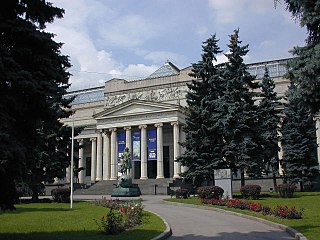
The Pushkin State Museum of Fine Arts is the largest museum of European art in Moscow. It is located in Volkhonka street, just opposite the Cathedral of Christ the Saviour. The International musical festival Sviatoslav Richter's December nights has been held in the Pushkin Museum since 1981.
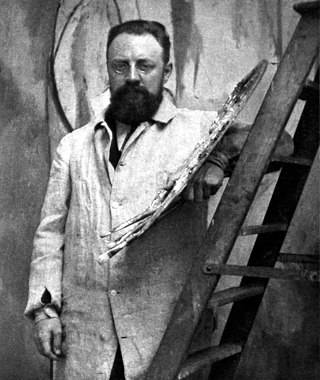
Henri Émile Benoît Matisse was a French visual artist, known for both his use of colour and his fluid and original draughtsmanship. He was a draughtsman, printmaker, and sculptor, but is known primarily as a painter.

Novodevichy Cemetery is a cemetery in Moscow. It lies next to the southern wall of the 16th-century Novodevichy Convent, which is the city's third most popular tourist site.

Lyubov Sergeyevna Popova was a Russian-Soviet avant-garde artist, painter and designer.

The House of Golitsyn is the second largest and noblest Princely house in Russia. Among its members were warlords, landlords, Knyaz, knights, diplomats, Prime Ministers, admirals, stewards, State Counsellors and statesmen.

Dance (La Danse) is a painting made by Henri Matisse in 1910, at the request of Russian businessman and art collector Sergei Shchukin, who bequeathed the large decorative panel to the Hermitage Museum, in Saint Petersburg. The composition of dancing figures is commonly recognized as "a key point of (Matisse's) career and in the development of modern painting". A preliminary version of the work, sketched by Matisse in 1909 as a study for the work, resides at MoMA in New York, where it has been labeled Dance (I).

Léopold Frédéric Léopoldowitsch Survage was a Russian-French painter of Finnish origin. Trained in Moscow, he identified with the Russian avant-garde before moving to Paris, where he shared a studio with Amedeo Modigliani and experimented with abstract films. He also gained commissions for Serge Diaghilev's Ballets Russes.

The Conversation, a painting by Henri Matisse dating from 1908 to 1912, depicts the artist and his wife facing each other before a background of intense blue. It is in the collection of the Hermitage Museum in Saint Petersburg, Russia.
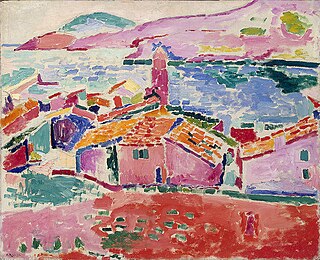
View of Collioure is a 1905 oil-on-canvas painting by Henri Matisse. It is an example of the style that Matisse employed during his early period of Fauvism. The painting has been in the collection of The Hermitage, St. Petersburg, Russia since 1948. It was originally part of the Sergei Shchukin collection, and then was at the State Museum of New Western Art in Moscow.

Window at Tangier; also referred to as La Fenêtre à Tanger, Paysage vu d'une fenêtre, and Landscape viewed from a window, Tangiers, is a painting by Henri Matisse, executed in 1912. It is held at the Pushkin Museum of Fine Arts, Moscow.
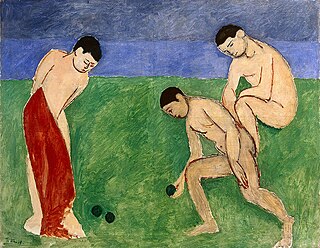
Game of Bowls is a 1908 painting by the French artist Henri Matisse. The painting shows three young men, probably Matisse's sons and nephew, playing a game of boules. Matisse sees the game as a manifestation of man's creativity, and an instrument to use in understanding the codes of life. The painting is part of Matisse's series on man's "Golden Age" and was part of Sergei Shchukin's collection before the October Revolution of 1917. It is now in the collection of The Hermitage, St. Petersburg, Russia.

Sergei Ivanovich Shchukin was a Russian businessman who became an art collector, mainly of French Impressionist and Post-Impressionist art.

Vasily Petrovich Botkin was a Russian essayist, literary, art and music critic, translator and publicist.

Ivan Abramovich Morozov was a Russian businessman and, from 1907 to 1914, a major collector of avant-garde French art.

The State Museum of Oriental Art is one of the biggest cultural institutions in the world for preservation, research, and display of Oriental art. The museum was founded in 1918 as a part of soviet programme to support unique cultures of USSR subdivisions. Since 1970 the museum is located in the centre of Moscow in the historical building known as the Lunins' House, a private residence built in the early 19th century by the famous architect Domenico Gilardi.
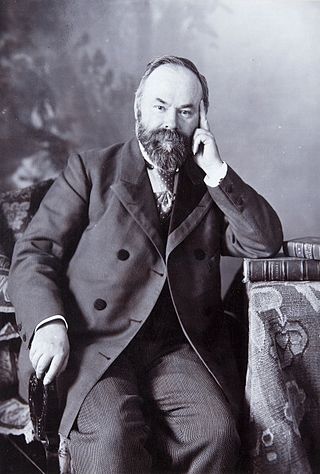
Pyotr Ivanovich Shchukin was an art collector who built an important collection of Russian ancient art and artifacts and owned several impressionist masterpieces.

Female Nude is an 1876 painting by Pierre-Auguste Renoir, also known as Nude Woman Sitting on a Couch, Anna, After Bathing and Pearl. It is housed in the Pushkin Museum, in Moscow, and is an example of Renoir's many nude paintings, a recurring subject that preoccupied him throughout his life. The painting was created in the characteristic soft brush strokes of the Impressionist movement to emphasise feminine beauty.

Goldfish is an oil-on-canvas still life painting by French visual artist Henri Matisse. Painted in 1912, Goldfish was part of a series that Matisse produced between the spring and early summer of 1912.

Arab Coffeehouse, is an oil-on-canvas painting by French visual artist Henri Matisse. Produced in 1913, Arab Coffeehouse was part of a series of goldfish paintings that Matisse produced in the 1910s and 1920s.

Pierrot and Harlequin or Mardi Gras is an 1888-1890 oil on canvas painting by Paul Cézanne, now in the Pushkin Museum in Moscow. As the title suggests, it shows the commedia dell'arte characters Pierrot and Harlequin.




















